AWS Certified SysOps Administrator - Associate
Domain 3 Deployment Provisioning and Automation
Configuring Different Deployment Strategies for Various AWS Services
In this article, we explore how to configure different deployment strategies for various AWS services using CodeDeploy. AWS provides primary compute environments such as Amazon Elastic Compute Cloud (EC2), AWS Lambda, and Amazon Elastic Container Service (AWS ECS). While AWS EKS (Elastic Kubernetes Service) is available, it follows Kubernetes-specific deployment practices which are beyond the scope of this article and exam focus. For exam preparation, concentrate on EC2, Lambda, and ECS.
Deployments on Amazon Elastic Compute Cloud (EC2)
When deploying applications on EC2 using CodeDeploy, you have two primary strategies:
1. In-Place Deployment
In-place deployment updates each instance within the deployment group individually. The process involves:
- Retrieving deployment artifacts from a source such as an S3 bucket or GitHub.
- Identifying the EC2 instances (often part of an auto-scaling group) in the deployment group and preparing them for updating.
- Fetching and installing the new version on these instances.
This method is cost-effective, yet it may result in brief downtime if the application cannot tolerate temporary unavailability. A load balancer typically minimizes user impact, except in scenarios of significantly reduced capacity.
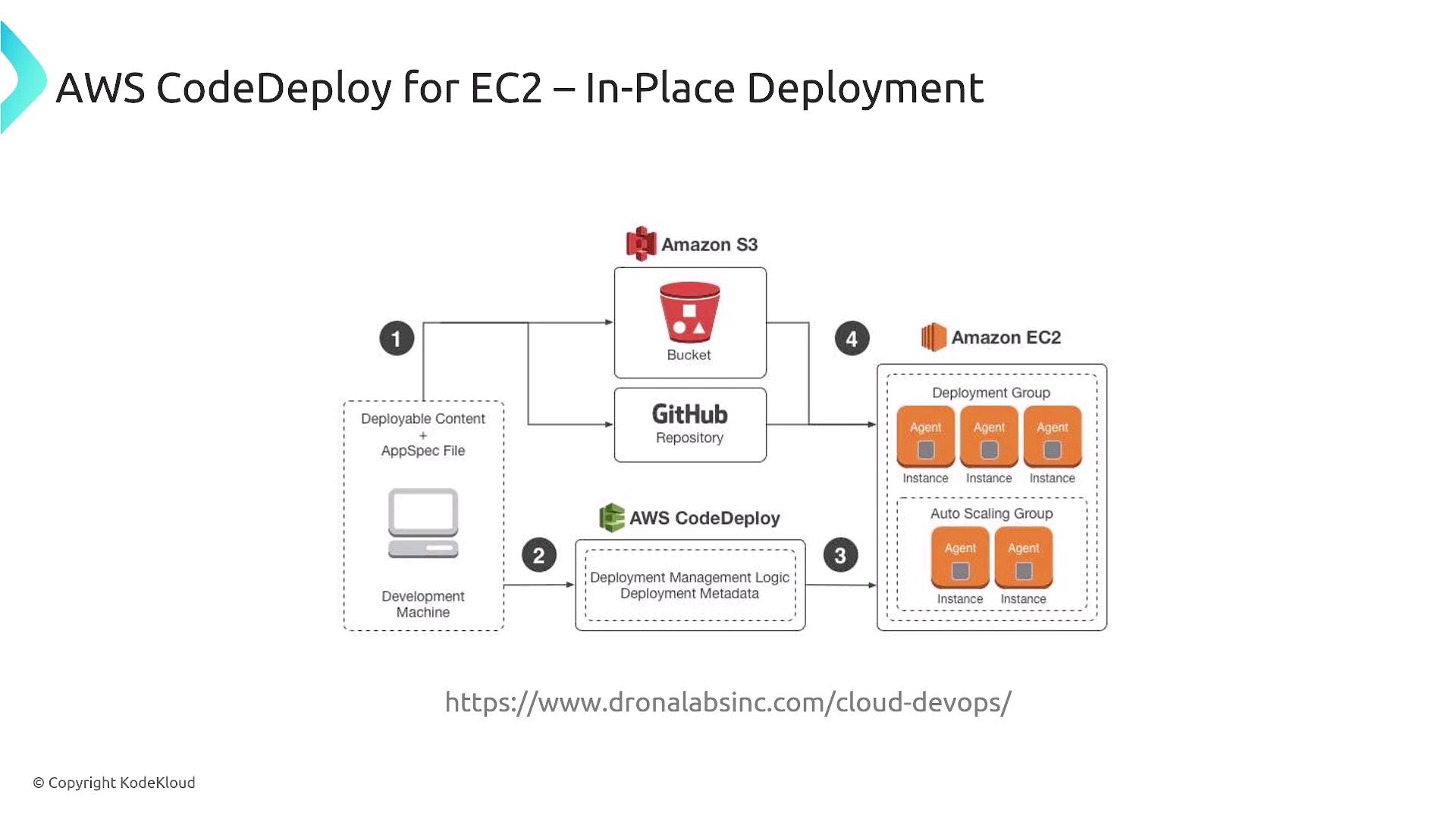
2. Blue-Green Deployment
Blue-green deployment involves provisioning an entirely new set of servers (the green environment) with the updated application while keeping the current blue environment active. Once the new environment is validated:
- Traffic is switched using an auto-scaling group or load balancer.
- The blue environment is eventually decommissioned.
This strategy minimizes downtime and simplifies rollback procedures, though it requires additional infrastructure resources during transition.
Tip
Blue-green deployments reduce risks by ensuring that the new version is thoroughly validated before decommissioning the old environment.
Deployments on AWS Lambda
AWS Lambda supports three deployment strategies through CodeDeploy, offering varying levels of risk management and rollout control:
1. All-at-Once Deployment
This strategy immediately replaces all instances of a Lambda function with the new version. Although this approach is fast, any issues in the new version will have an immediate impact.
- The deployment artifact is typically built by CodeBuild.
- CodeDeploy manages the seamless transition from the old version (e.g., version 1.1) to the new version (e.g., version 1.2).
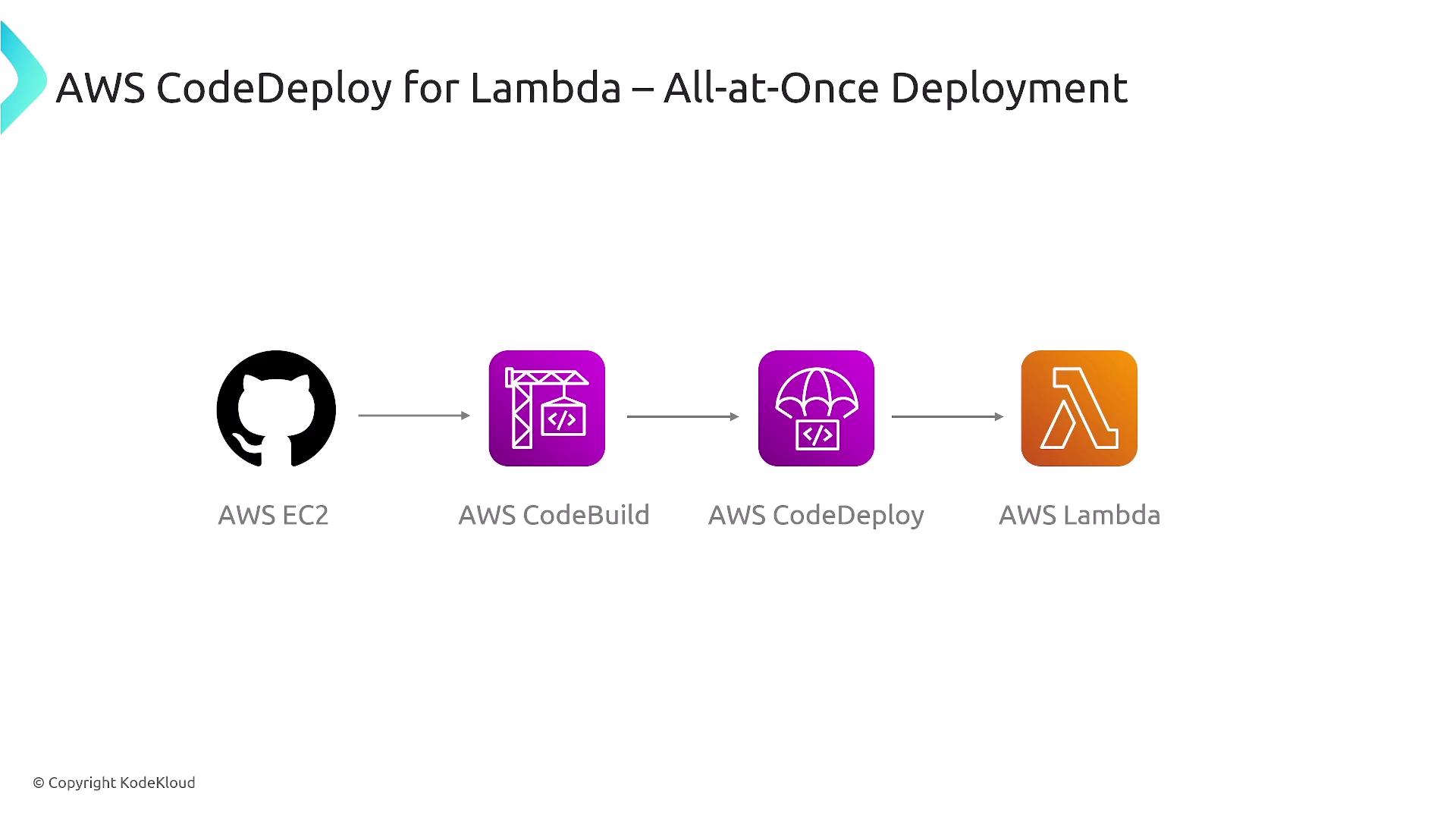
2. Linear Deployment
In a linear deployment, traffic shifts gradually from the current version to the new one over a specified period. For example, CodeDeploy can be set to shift 10% of the traffic every minute. This incremental approach continues until all traffic is directed to the new version.
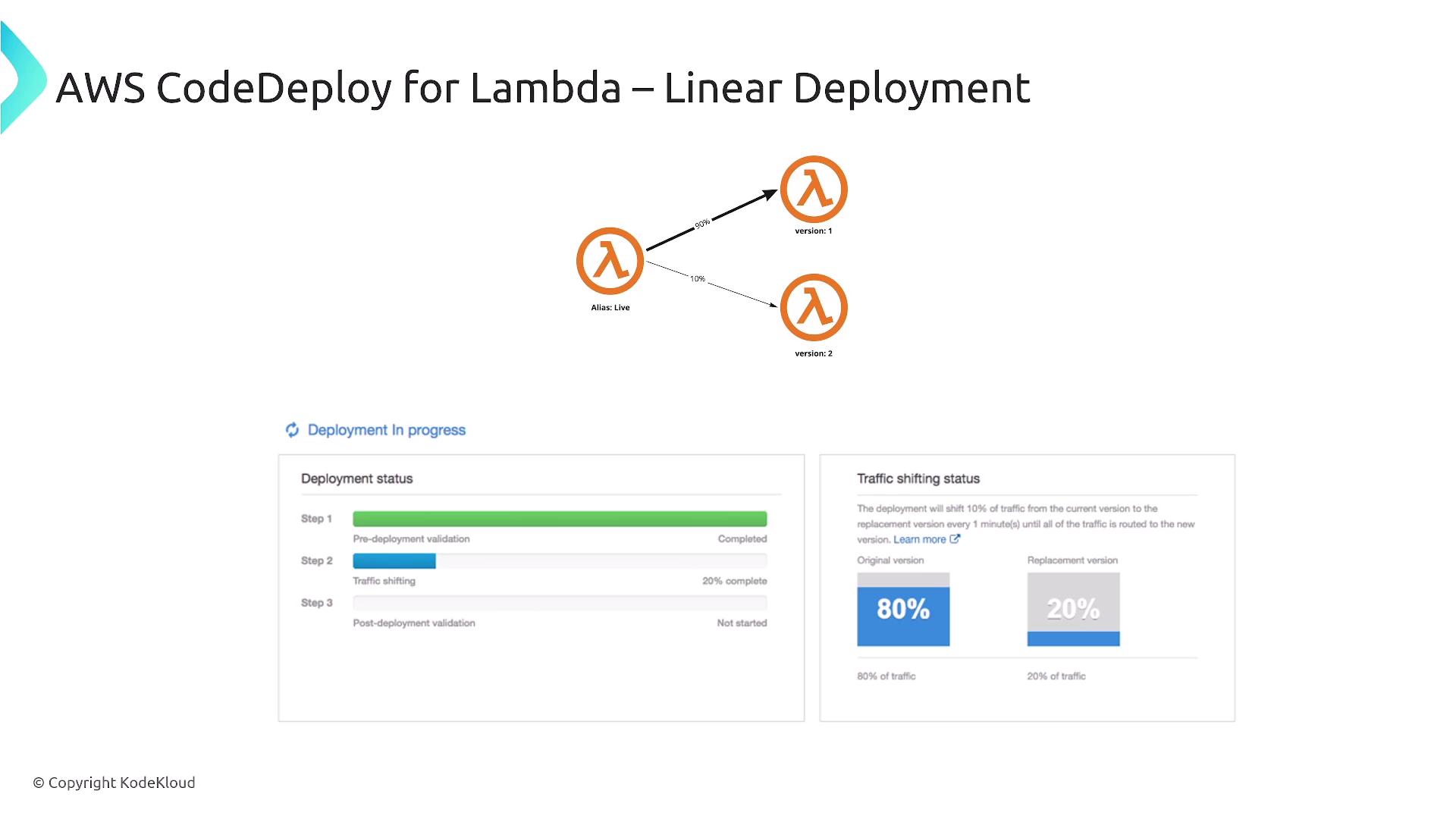
3. Canary Deployment
Canary deployments begin by directing a small percentage of traffic (e.g., 10%) to the new version, while the remaining traffic continues to be handled by the existing version. After a monitoring period (for example, five minutes), if the new version proves stable, all traffic is shifted over.
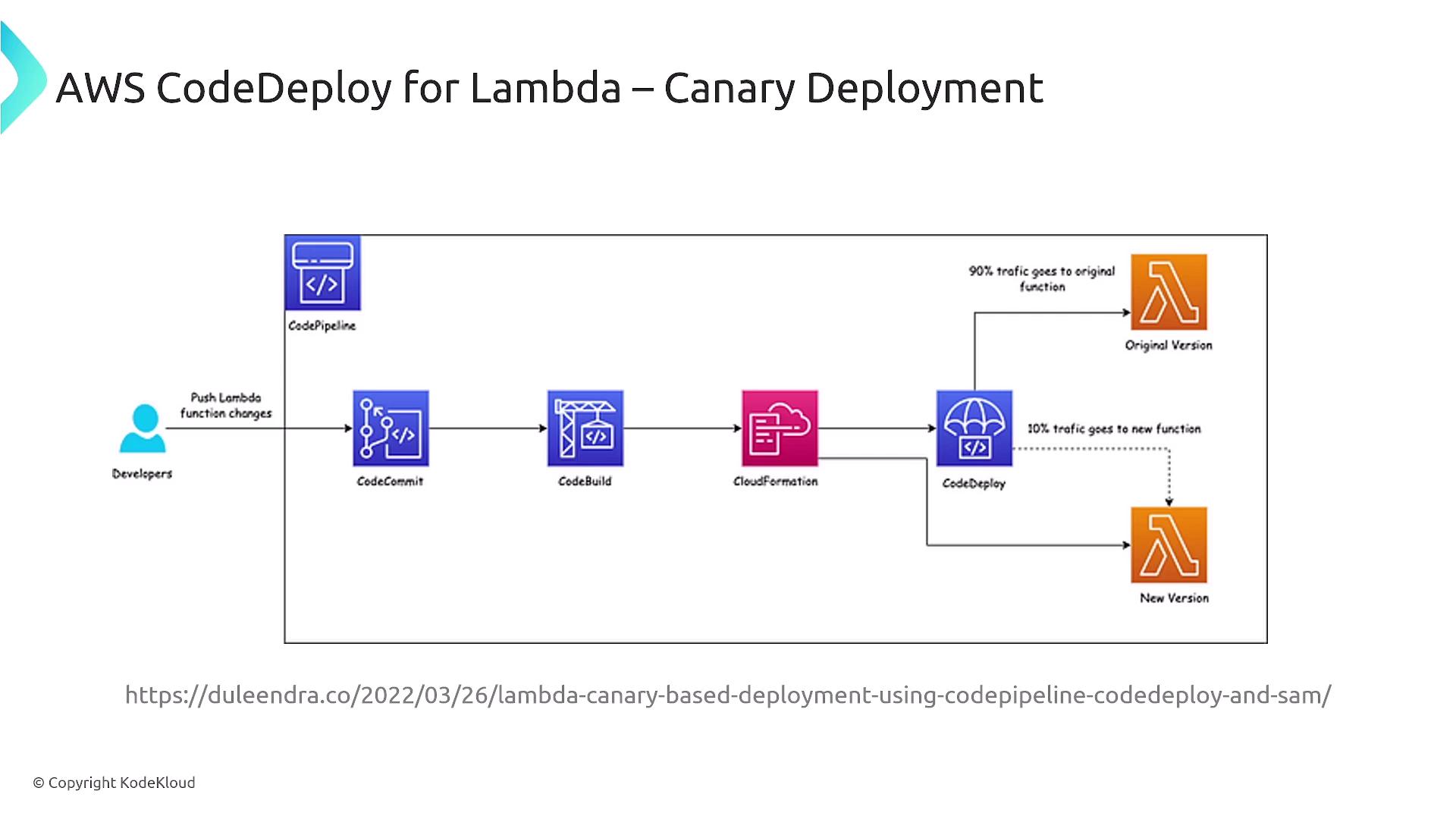
Deployments on Amazon Elastic Container Service (AWS ECS)
For containerized applications running on ECS, the deployment strategies mirror those used for Lambda:
- All-at-Once: Immediately directs all traffic to the updated container version.
- Linear: Gradually transitions traffic in defined increments.
- Canary: Begins with a small portion of traffic being shifted to the new container version, followed by monitoring and then a complete switch once validated.
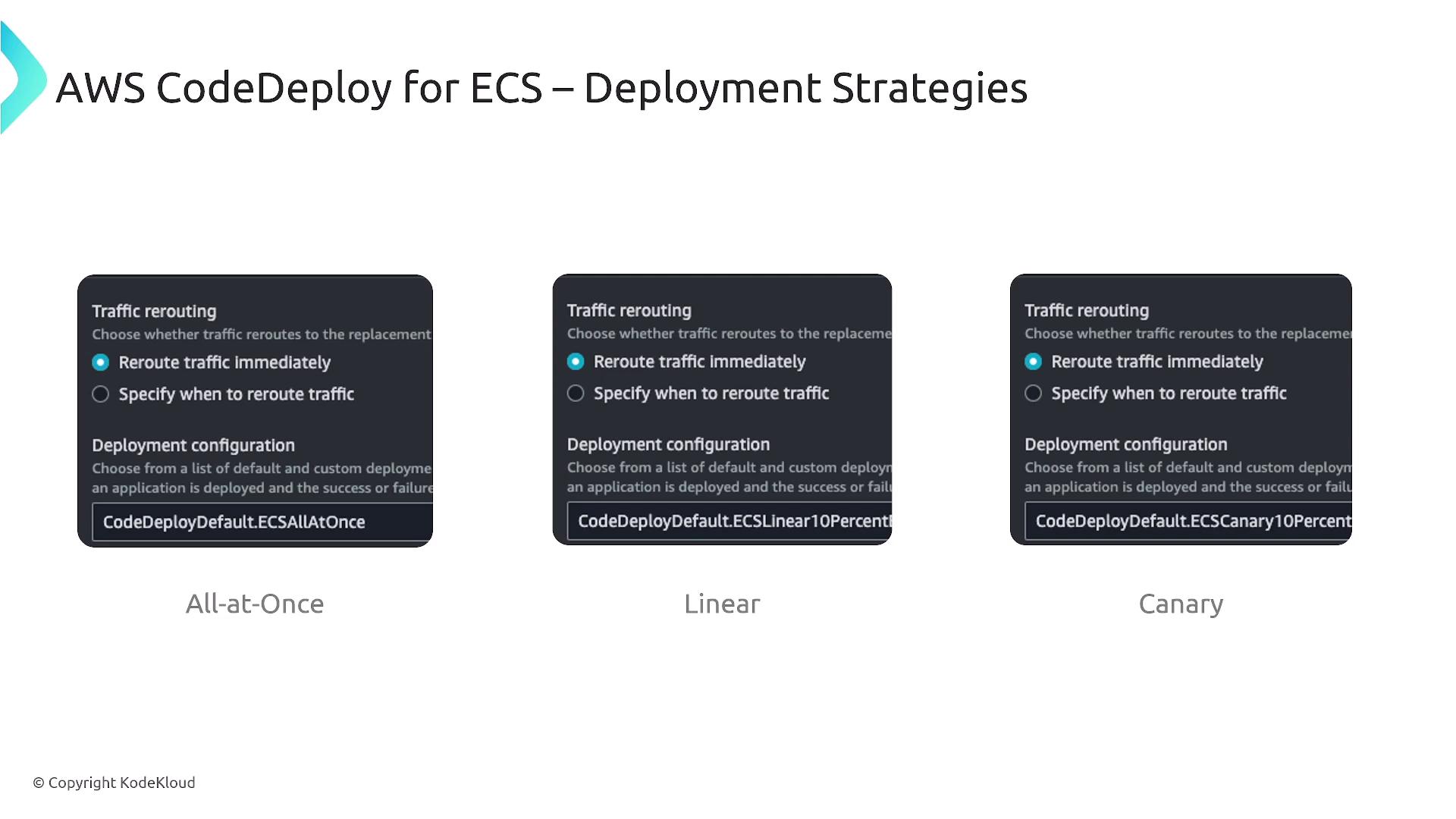
For further details on ECS canary deployments, visual progress indicators such as traffic shifting phases and status updates clearly depict the gradual process.
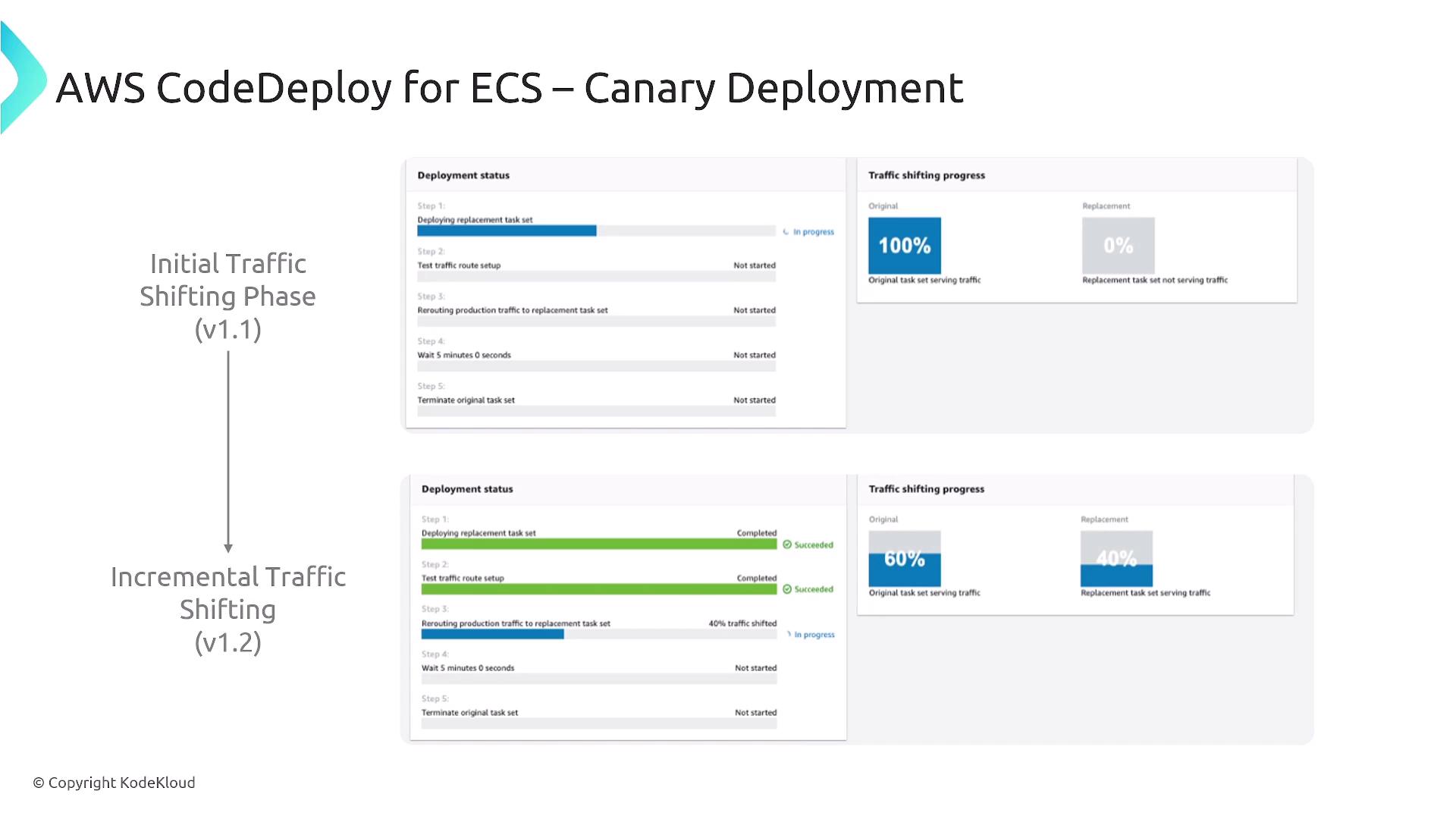
Deployment Strategy Overview
Understanding these deployment strategies is crucial for designing robust deployment workflows on AWS. The table below summarizes the key differences between the approaches on EC2, Lambda, and ECS:
| Service | Strategy Options | Key Considerations |
|---|---|---|
| EC2 | In-Place, Blue-Green | In-place is cost-efficient but may incur downtime; Blue-green minimizes downtime at the expense of additional resources. |
| Lambda & ECS | All-at-Once, Linear, Canary | Allows controlled and gradual rollouts to minimize risk; suitable for environments where traffic can be shifted incrementally. |
Exam Preparation Tip
Remember that gradual traffic shifts using strategies like linear and canary are applicable to AWS Lambda and Amazon ECS, but such approaches do not apply to Amazon EC2 with CodeDeploy.
Summary
EC2 Deployments:
- In-Place: Cost-effective yet may experience brief downtime.
- Blue-Green: Offers minimal downtime and easier rollbacks using duplicate infrastructure during transition.
Lambda and ECS Deployments:
- All-at-Once: Fast but potentially risky if issues arise.
- Linear: Gradual traffic shifts reduce potential negative impacts during rollout.
- Canary: Initial small-scale exposure to verify the new version before full deployment.
By understanding and selecting the appropriate deployment strategy, you can ensure efficient and resilient application rollouts, an essential skill for AWS certifications and managing production environments effectively.
This concludes our in-depth overview of configuring different deployment strategies for various AWS services using CodeDeploy.
Watch Video
Watch video content